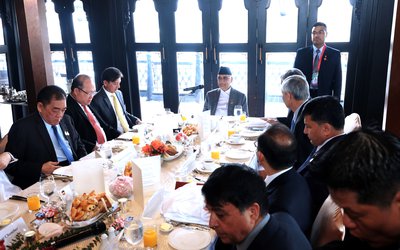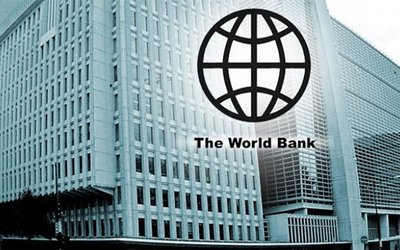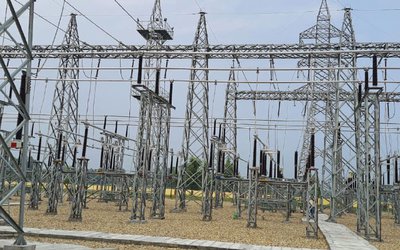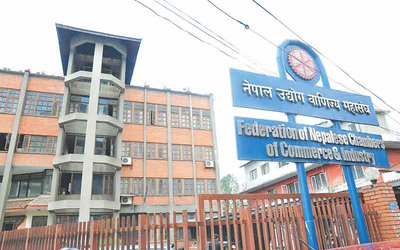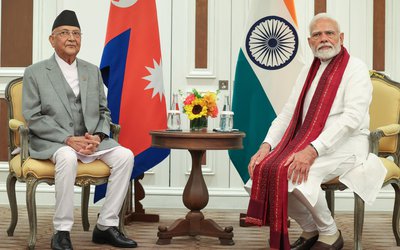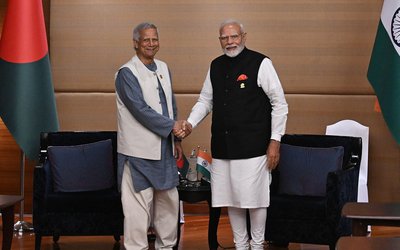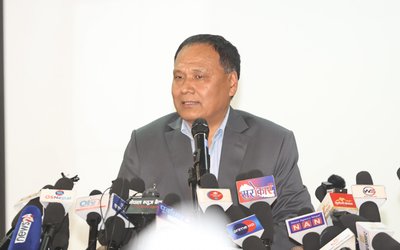
Contrary to the projection as a country with a large hydropower potential in the world, Nepal is now a net importer of electricity from India. With additional 80 MW of power import beginning next month, Nepal will import up to 300 MW of electricity by paying over Rs. 13 billion annually to India.
From a net exporter a decade ago, Nepal is now a net importer of energy. During the winter, Nepal’s dependency on electricity imported from India is increasing. At present, Nepal is importing 230 MW power. On average, Nepal is importing up to 240-243 MW from India.
The pressure is now on the electricity feeder creating the problems in supply. As there is just three hours of electricity in the day time, it is putting added pressure on the feeder. Nepal is generating below 500 MW now and water level will go below the current level in March, reducing the country's generation capacity further.
With the announcement of 91 hours of load shedding from February 1, Nepal Electricity Authority has already warned that it will increase power outage hours in case of failure to import additional electricity from India.
“This will affect the distribution system. There will be only three hours of light in a day,” said a senior official at NEA. “Until Nepal increases electricity in the transmission lines, there will be more pressure on local feeders.”
With the water level going down in the river, there is a drastic reduction in the generation capacity of Nepal’s run-off-the-river hydropower projects. As there is a lack of electricity in the NEA grid, it has announced additional hours of load shedding.
According to the officials of Nepal Electricity Authority, the situation can go worse in case Nepal cannot import additional 80 MW power from India. At a time when there is a delay in the construction of hydropower projects in Nepal due to political instability and other disputes, some dozens of projects with the capacity of over 1000 MW are stalled.
In this bleak energy sector scenario, Nepal has requested India to provide the additional electricity through the Muzaffarpur- Dhalkebar transmission line.
During the two-day meeting of Joint Working Committee (JWC) and Joint Steering Committee on Nepal-India Cooperation in Power Sector that concluded recently, both sides also agreed to increase the import of electricity from the transmission line to 200 MW by next winter by increasing its capacity and to run it in full capacity by December 2017.
The high-level meeting was co-chaired by Nepal Energy Secretary Suman Prasad Sharma and India's Power Secretary Pradip Kumar Pujari, according to a press release issued by the Energy Ministry.
Despite the potential of importing 1,000 MW electricity from the transmission line, there is no high power substation in Dhalkebar to transfer power as per the demand. So there is a need to increase the capacity of the substation for the import of additional power, according to officials.
The meeting also stressed on the need to expedite the construction works relating to 132 KV Kataiya-Kushwaha and Raxaul-Parwanipur transmission lines so as to enable import of additional 100 MW of electricity from India by September 2016.
During the meeting, that mainly discussed implementation of power trade agreement the two countries signed in 2014, matters relating to expediting construction works of cross- border transmission lines, grid connectivity and power trade between Nepal and India came up.
India agreed to supply 300 MW of electricity to energy-starved Nepal in the next one-and-a-half years as the two sides decided to expedite construction of cross-border transmission lines and boost bilateral cooperation including in power trade.
The meeting evaluated the cross-border transmission plans being prepared by technical committees and also analyzed the findings of a study relating to the operation of cross-border transmission system. The findings of the study will be presented during the third meeting of the Joint Committee scheduled to take place in June.
During the meeting both sides expressed hope that India will prepare necessary policy arrangements for power trading purposes under the free market concept within 6 to 8 months so as to allow Nepalese power producers to have access to Indian market for exporting power generated by them in future.
Nepal and India have agreed to prepare a regulatory framework within the next six months to fully begin implementation of bilateral power trade agreement sealed in October 2014.
The framework will clarify roles, responsibilities and obligations of various players engaged in power trade between the two neighboring countries and the methodology of buying and selling electricity across the border.
“We have to work on two things simultaneously to implement Nepal-India power trade agreement,” MoP Secretary Pujari told an interaction held by Nepal-India Chamber of Commerce and Industry.
“The first is putting regulatory and other frameworks in place. The other is building necessary infrastructure, especially transmission lines for transportation of electricity across Nepal-India border,” Pujari said. “In today’s meeting, we moved quite a bit in attaining both the objectives.”
“Nepal’s priority has to be in construction of cross-border transmission lines because in the short term we have to import electricity from India to reduce load-shedding hours,” Energy Secretary Sharma said. Nepal currently faces power cuts of over 14 hours per day.
Also, discussions on expediting construction of three 400kV cross-border transmission lines, namely Butwal-Gorakhpur, Dhalkebar-Muzaffarpur Second Line, Lumki-Bareli, were held during the meeting.
Earlier, a Nepal-India technical committee had proposed development of six 400kV cross-border transmission lines for cross-border power trade.
They are: Attariya-Uttarakhand, Lamki-Bareli, Kohalpur-Rupaidiha, Butwal-Gorakhpur, Dhalkebar-Muzaffarpur and Inaruwa-Bihar.
Of these, construction of Butwal-Gorakhpur, Dhalkebar-Muzaffarpur (Second Line), and Lamki-Bareli is scheduled to be completed within 2022.
Nepal is eyeing generation of 13,700 MW of electricity within 2025 and 44,000 MW of electricity within 2035. Of this quantum of electricity, 12,000 MW can be exported within 2025 and 24,000 MW can be exported within 2035.
Once Nepal starts generating surplus electricity, it can be exported to India and beyond, as the southern neighbor is currently preparing a policy to enable power trade in South Asian region.
As a number of projects are under construction, Nepal will have surplus energy in a few years' time. The Nepal-India power trading in commercial level will also benefit private sector power producers.
- IME GROUP: Expands Into Paper Industry
- Mar 24, 2025
- CPN UML: Instigated By India
- Mar 23, 2025
- ADB’S CHIEF ECONOMIST: Nepal Reduces Poverty
- Mar 11, 2025
- FM DR. DEUBA: A Successful Visit
- Mar 11, 2025
- MD GHISING: Target Of Personal Grudge
- Mar 09, 2025

